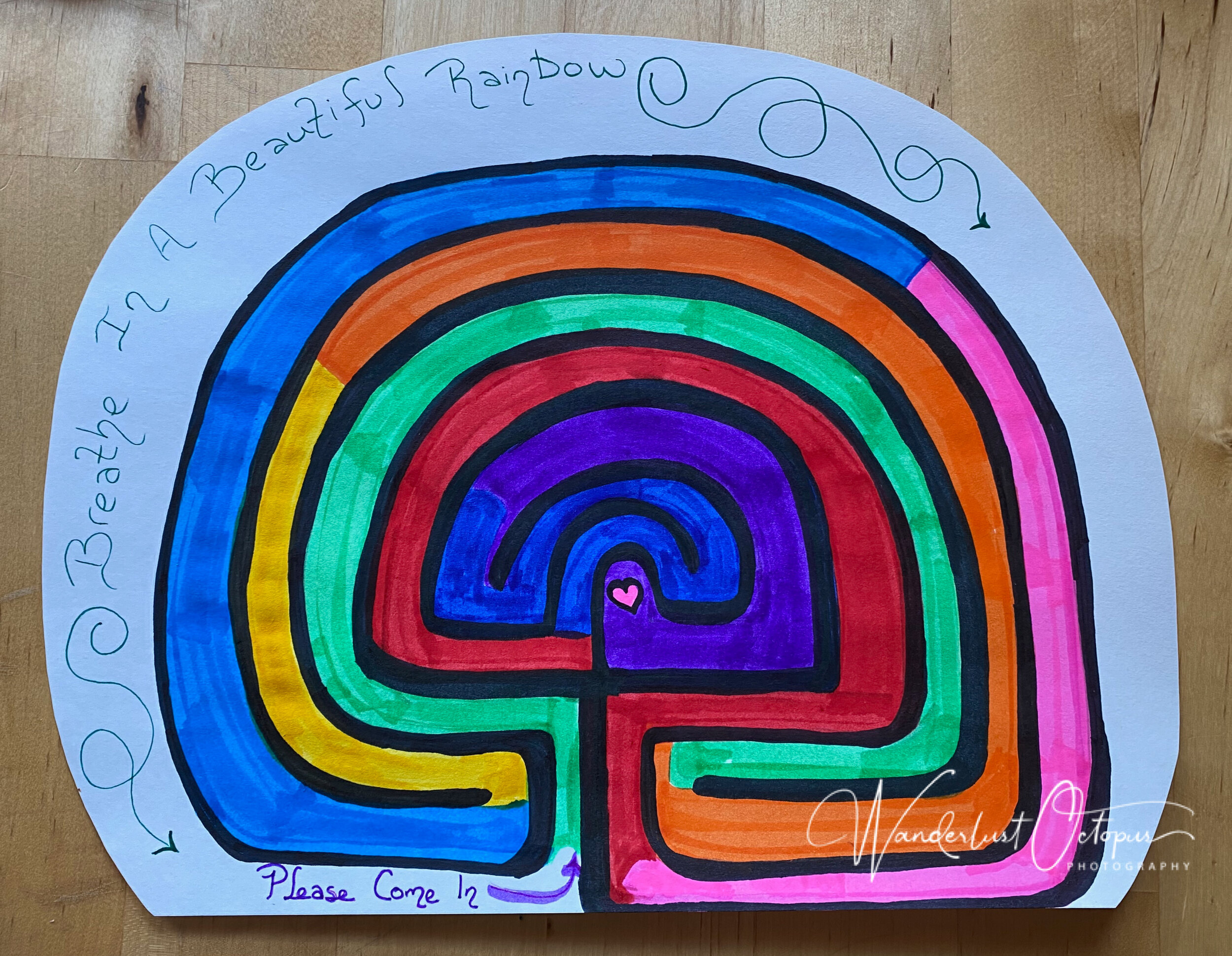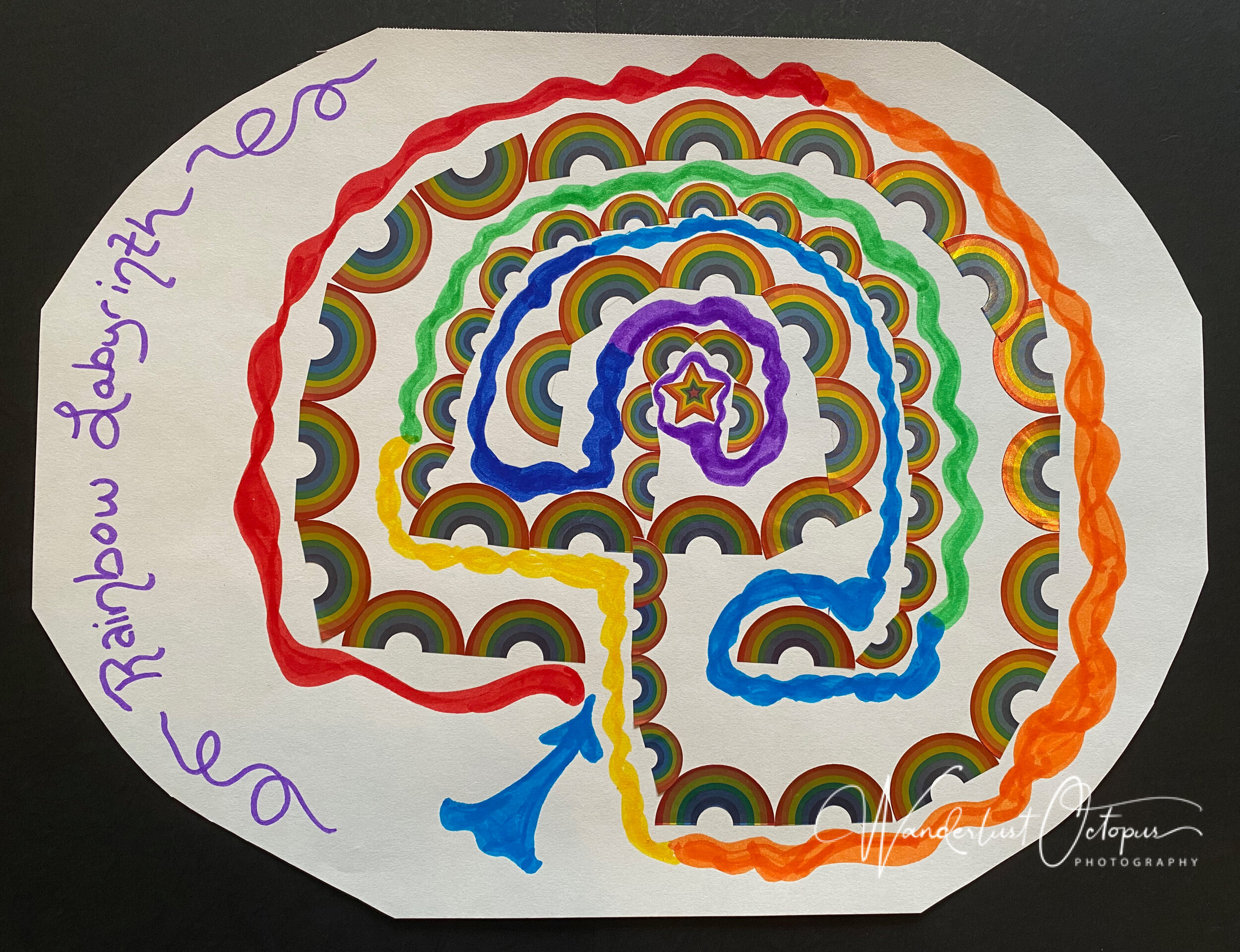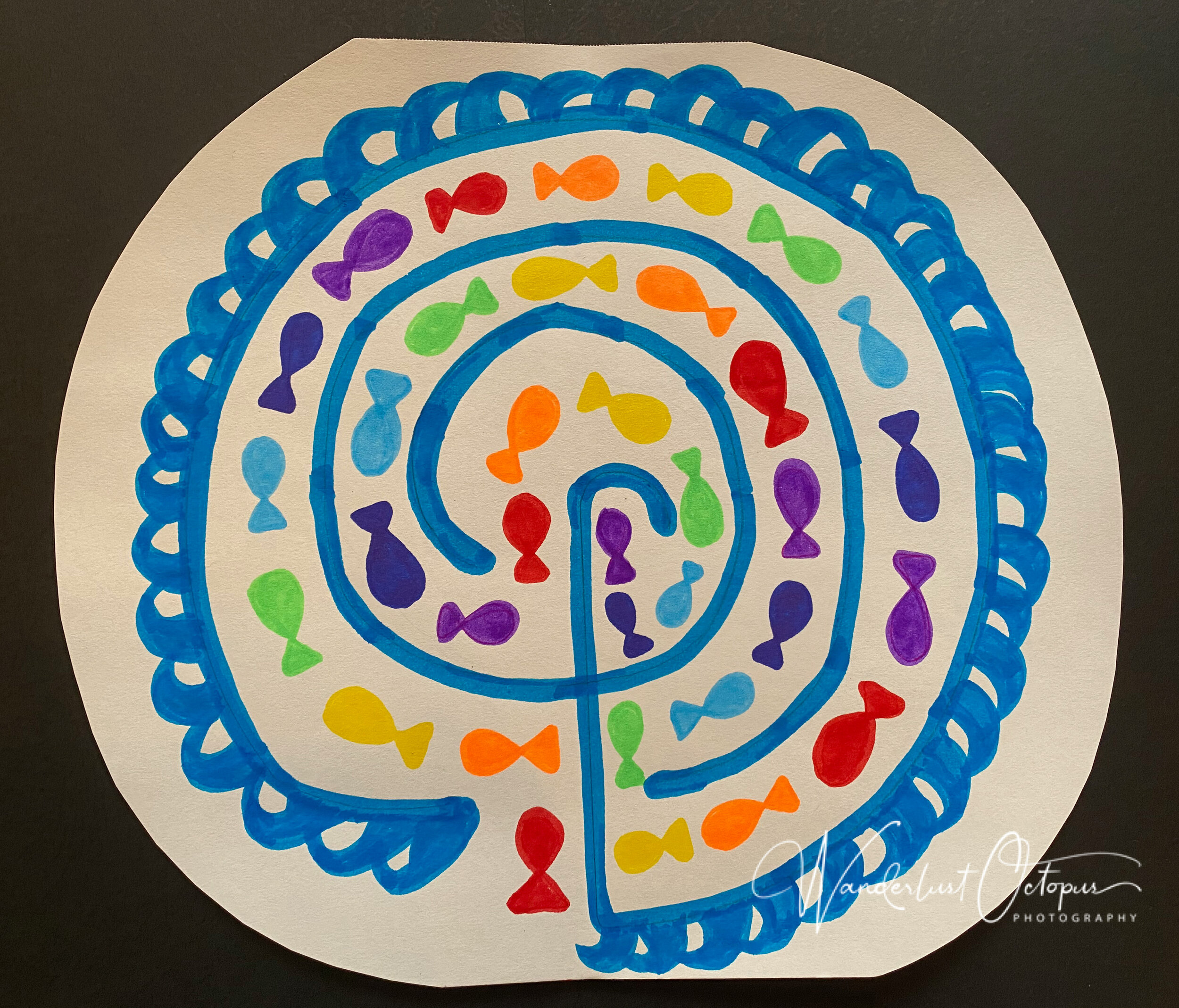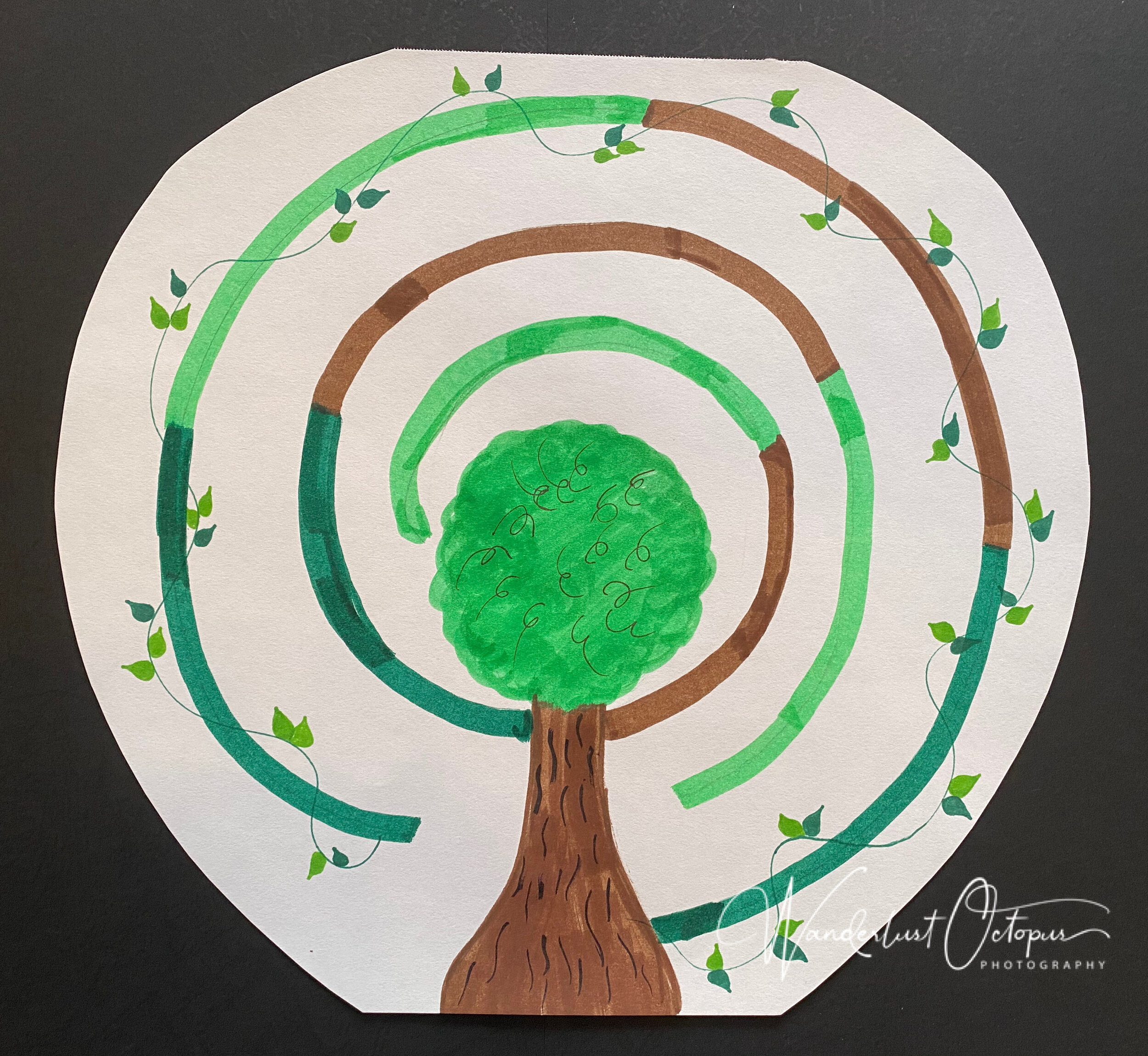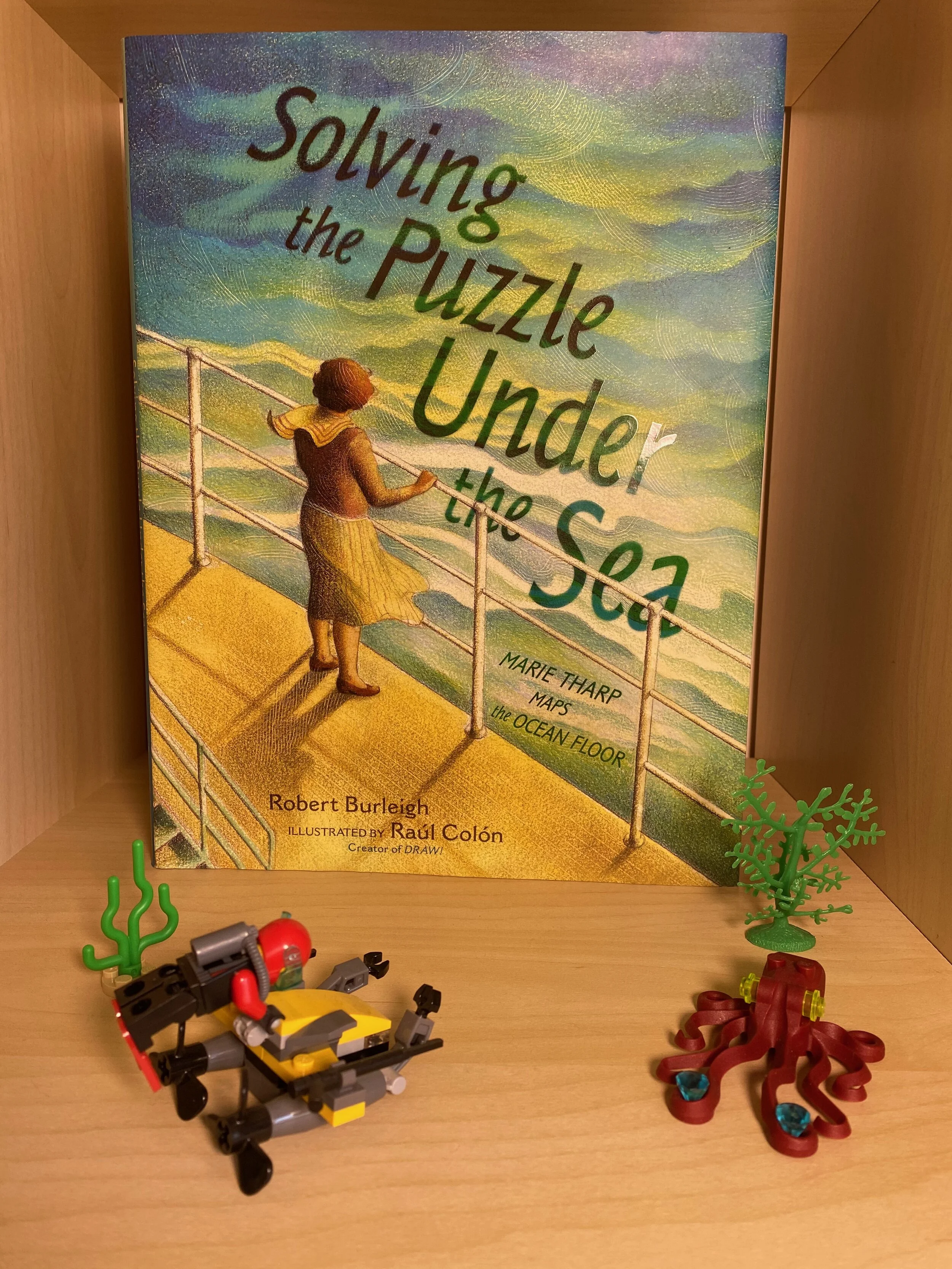Labyrinths, Color & Calm
I don’t know about you, but I’m finding that there is a lot to think about, and frankly, to worry about, right now. I hope you’re not worried. I hope you’re finding things to do. I hope your learning from home is going well. I hope you can get outside and enjoy the spring as it unfurls around us with all of its magnificent colors and smells.
Because of covid-19, all of the parks near me are all closed. I can’t get out to do my regular hiking (or diving!). Being out in the woods always calms me. But, since I can’t really do that right now, I have been thinking about other ways to quiet all of the thoughts in my mind.
I’ve written before about labyrinths and how they can be used for meditation. This week, I decided to make some finger labyrinths to walk at my desk.
First up: what’s a labyrinth?
You might be thinking of a fancy maze. Let me tell you: while the word labyrinth can mean maze, that is NOT what we’re talking about here! One of the worst days of my life was spent being lost in a cornfield maze following two people who were SOOOOO SURE they knew the way out (spoiler alert: they didn’t). I really hate mazes. I really hate corn mazes. Seriously. Don’t ever invite me to join you at a corn maze. But I love labyrinths!
Labyrinths are an ancient way of meditating and thinking: a way to quiet your brain. Some labyrinth patterns are really old, dating back to Greece in 1200 BCE. Others date back to medieval times when labyrinths were often found in cathedrals and were part of religious pilgrimages. Today, contemporary labyrinth designs have many shapes and meanings.
A labyrinth is really a winding path. There is no way to get lost: you walk in toward the center, follow a path, and then you walk out along the same path.
Labyrinths can be large, physical spaces: a path carved into the sand, a path marked by stones or tape in grass or in a field, or even stone embedded in a floor. Walking through the labyrinth is a form of meditation and it’s particularly great for people like me who have a hard time sitting still. The labyrinth gives me a structure to follow when I’m meditating, but it also encourages me to move my body instead of sitting still.
Since our focus right now is on staying inside, I want to introduce you to another form of labyrinths: the finger labyrinth. A finger labyrinth looks exactly like a larger labyrinth, but you “walk” it with your finger.
No matter what their designs, labyrinths have a place where you enter and exit the labyrinth, a path that you follow, and a center. This is a very simple 3-circuit labyrinth I drew. The circuit is how many times you go around the center before arriving there. In this labyrinth, you start at the blue arrow and follow the path, tracing your finger until you reach the center, which is the purple space. Then you come back out, following the same path.
There’s no right or wrong way to walk a labyrinth. But, when my mind is busy and I want to calm it, I try these steps.
First, I focus on my breathing and when I breathe in, I say quietly in my mind, “breathing in, breathing in.” When I breathe out, I say quietly in my mind, “breathing out, breathing out.” You could also breathe in to a count of 3 or 5 and breathe out to a count of 3 or 5. In the labyrinth above, you could experiment with breathing colors: breathing in on the red, out on the orange, in on the green, out on the light blue, in on the yellow, out on the dark blue. What you’re doing as you breathe this way is slowing your mind and focusing on your breathing. On the way in, I use one of the techniques I described above to focus on my breathing. I find that this helps to push the worries out of my mind and helps me to think about where I am right now instead of worrying about something that hasn’t happened yet or fretting over something that already happened and I can’t change. When I walk into the labyrinth, I am letting go of my worries.
When I get to the center, I like to rest. (If I’m walking a big labyrinth, I like to sit down right in the center! But, in a finger labyrinth, I rest metaphorically). In the center, sometimes I continue with my breathing, focusing on breathing in and out slowly. Sometimes I use a poem or a reading. Sometimes I don’t. Sometimes I write notes to myself when I get to the center. Sometimes I do nothing at all. Once, in a big labyrinth, I took a nap in the middle. In the center of the labyrinth, I am letting my mind rest or maybe opening up my thoughts to new ideas I hadn’t considered.
And then it’s time to come out. This is actually my favorite part of walking a labyrinth. I usually feel much lighter and happier on my way out. My mind is calm and I am ready to move on in my day (or, if I’m not, I might walk the labyrinth again!). Walking out of the labyrinth, I have a newly calm mind or I’m excited about the new ideas I gathered in the center.
When I’m walking the labyrinth, sometimes I play music. Sometimes I walk in silence. Sometimes I walk faster than other times. Sometimes I dance or wiggle my finger along (or actually dance and wiggle in a big labyrinth!). There’s no wrong way to walk a labyrinth!
Here are some of the other finger labyrinths I made this week: 2 rainbow labyrinths, a fish labyrinth, and a tree labyrinth. If you’d like to walk a labyrinth, save one of these images to your device and use your finger to walk along the screen. Or, better yet, have an adult help you print one out and use your finger to walk the labyrinth during some screen-free time. Also, send me a quick note if you’d like a copy of one of these labyrinths without the watermark in the corner (where it says Wanderlust Octopus) and I’ll send you a plain copy of the image.
When you’re ready to walk your labyrinth, try to find a quiet space and decide if you’d like music or not.
Want more?
Make your own classical labyrinth using these instructions from Lea Goode-Harris: labyrinth instructions.
Learn more about labyrinths (just for kids!). Written by Norma Sandowski



